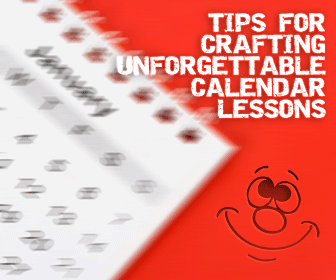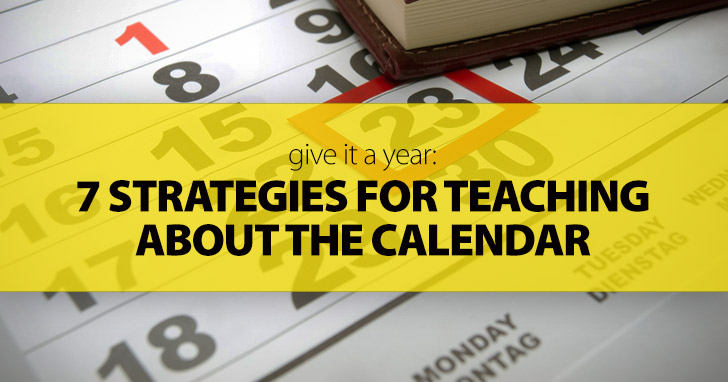Is Christmas in April? Tips for Crafting Unforgettable Calendar Lessons


Everyone needs to be able to discuss the date or the year, no matter what their age. An added challenge for some is that they may usually put the date before the month, but now need to adjust to the month and then the date. Of course, there are also ordinal numerals to work with as well. Here are some simple, fun strategies to teach reading a calendar for your ESL class.

First you will need to introduce the names of the days of the week and the months of the year. Show a calendar of the year in its entirety. Point out how the calendar week starts on Sunday, as in other cultures it may start on Monday or another day. Go over the pronunciation of the months and the days. This lends itself to a lot of repetition. If you have covered birthdays, or it is an intermediate or advanced class, you can ask, “Who has a birthday in ___________?” (insert month), or simple questions like “On what day is this class?” and look for correct answers. This keeps it a bit more interesting.
In some other languages, it is not necessary to use ordinal numbers to express the date. You may need to explain to your students that in English it is done this way. Teach them the ordinal numbers all the way to “thirty-first,” as is necessary for the calendar. Some fun activities to teach them would be to have students line up, and other students tell you who is first, second and so on. You can make this activity as easy or difficult as you choose. Depending on your class, you may want to continue further with the ordinal numbers now or in future sessions.
It is very important to teach how to say a full date in English. Students may be used to giving the number before the month and so on. You will need to explain to them how the date is said in English: the month followed by the ordinal number, then the year. Start with today’s date and proceed with a few other example dates. Be sure to work on the pronunciation of the year as well. You may want to explain that some people say “two thousand thirteen,” while others say, “twenty-thirteen,” but they both mean 2013. You may want to ask the students for dates important to them to make it more relevant. Asking them who has a birthday in a certain month and then having them tell you the actual date is a fun way to include everyone on a personal level.
This activity requires some preparation from your student. If possible, order blank calendars from a teaching supply site, or print them out. You will need blank calendars with a space for a picture on the top. Have your students bring it a list of dates that are important to them, at least one for each month if possible. Have them design their own calendars, drawing a picture symbolizing either the month or the people who have important dates for them in that month. On the calendar grid, have them write “Anna’s birthday” or whatever the occasion may be, filling in the correct English terms. After they are done, have the students write sentences for five of those occasions. For example, “My sister’s birthday is on October 16th.” After they are done writing, they can share these with the class.
Reading and writing the date using numbers only may be a challenge for your students, particularly those who are used to putting the day before the month. Now, using numbers, they will need make sure they are putting the month before the day. You may want to start by drilling them regarding the numbers for each month. You call out a number and they respond with the month, and vice versa. For a fun twist, you may let the students act as the leaders and call out the numbers or months. Many students enjoy taking a leadership role.
This is a fun way to practice writing the date using numbers correctly in English. Begin by reviewing how to write the date in number form. This is very important because students will need to be able to write the date in number form on a check or the like. Divide the class into teams (number of teams would depend on number of students). Have one member of each team come to the board. Read aloud a date in this format: “the 27th of February.” The first player to write “2/27” correctly wins that round. This becomes a high energy game and is popular with students.
Assign each student a month of the year (repeating if necessary), but tell them not to tell others which month they have. Have them write three clues about the month, such as its holidays, season or usual weather in your area. When they finish, have them take turns reading them aloud. When it is their turn, have them choose volunteers to guess the correct answer. It is fun to see who can guess the answers the most quickly.
It will help them at work, at home and socially. Calendar is definitely one of those activities that you can and should put into your class routine, either at the beginning or end of every class. You can practice by yesterday was “_____________”, today is “______________” and tomorrow will be “________________.” Getting into a routine of saying the date on a regular basis will help your students become comfortable with using a calendar in English.